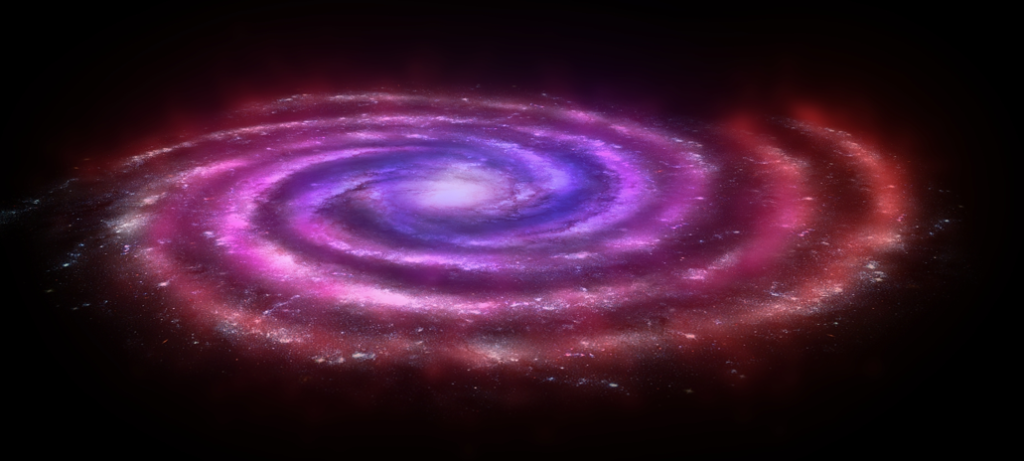{multithumb thumb_width=200} The stuff of stars is not always easy to see. But thanks to the Dutch Molecule Hunter HIFI hidden pools of gas in our galaxy are being mapped better than before. Astronomers found that our Milky Way is equipped with a lot more raw building blocks for stars than known before.

Newly formed stars shine brightly, practically crying out, “Hey, look at me!” But not everything in our Milky Way galaxy is easy to see. The bulk of material between the stars in the galaxy – the cool hydrogen gas from which stars spring – is nearly impossible to see.
Astronomers studying stars want to follow the journey from a star’s humble beginnings as a cloud of molecules to a full-blown blazing orb. To do so requires mapping the distribution of the stellar hydrogen fuel across the galaxy. We should be able to do this for our own Milky Way. Unfortunately, most hydrogen molecules in space are too cold to give off any visible light. They lurk unseen by most telescopes.
A new study from the spectrometer HIFI – one of the three scientific instruments on board the Herschel Space Observatory (ESA) – is shining light on these hidden pools of gas, revealing their whereabouts and quantities. In the same way that dyes are used to visualize swirling motions of transparent fluids, the Herschel team has used a new tracer to map the invisible hydrogen gas: ionized carbon.
Tracer
For decades, researchers have turned to another tracer molecule called carbon monoxide, which goes hand-in-hand with the hydrogen molecules, revealing their location. But this method has limitations. In regions where the gas is just beginning to pool — the earliest stage of cloud formation — there is no carbon monoxide. Ultraviolet light destroys the carbon monoxide. In the space between stars, where the gas is very thin, there is not enough dust to shield molecules from destruction by ultraviolet light.
The tracer ionized carbon does however linger in these large but relatively empty spaces, and can be used to pin down the hydrogen molecules. Researchers have observed ionized carbon from space before, but Herschel has, for the first time, provided a dramatically improved geographic map of its location and abundance in the galaxy. “The frequency at which ionized carbon emits light was the trickiest frequency for our instrument,” says Frank Helmich (SRON Netherlands Institute for Space research, principal investigator for HIFI. “That HIFI worked so well at this frequency was very satisfying. And crucial to the discoveries.”
Reservoir
“There is an enormous additional reservoir of material available to form new stars that we couldn’t identify before,” said Jorge Pineda of NASA’s Jet Propulsion Laboratory, Pasadena, Calif., lead author of a new paper on the findings published in the journal Astronomy & Astrophysics.
“We had to go to space to solve this mystery because our atmosphere absorbs the specific radiation we wanted to detect,” said William Langer of JPL, principal investigator of the Herschel project. “We also needed to see far-infrared light to pinpoint the location of the gas. For both these reasons, Herschel was the only telescope for the job.”
Herschel/HIFI
Herschel is an ESA space observatory with science instruments provided by European-led Principal Investigator consortia and with important participation from NASA. HIFI was built and developed by a consortium led by SRON Netherlands Institute for Space Research, with important contributions from TNO and small and medium-sized enterprises like Mecon.
The paper by J. L. Pineda, et al., A Herschel [C II] Galactic plane survey I: the global distribution of ISM gas components, has appeared in Astronomy & Astrophysics, 554, A103. More information on Herschel and the research results is to be found at: http://www.herschel.caltech.edu , http://www.nasa.gov/herschel en http://www.esa.int/SPECIALS/Herschel .

